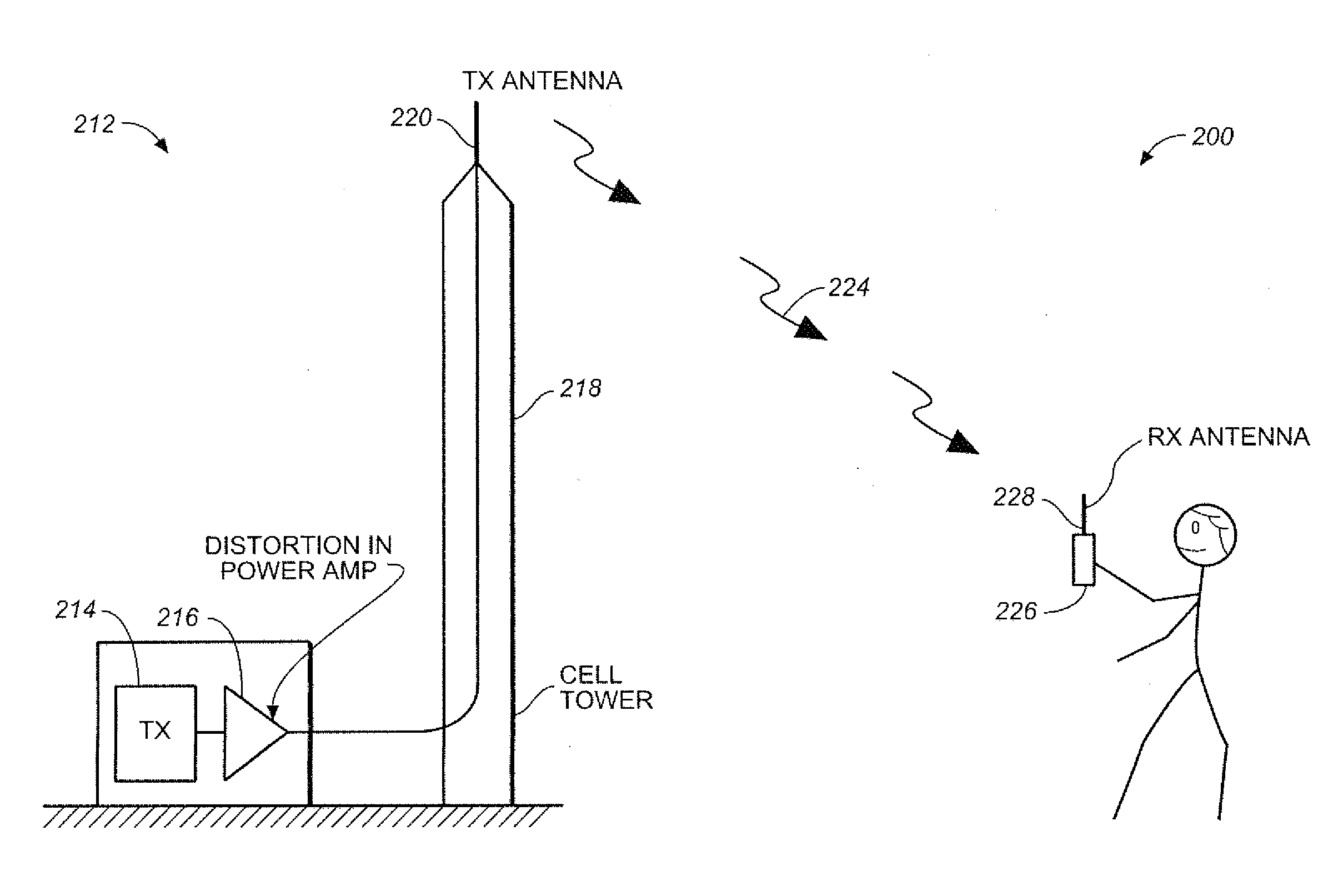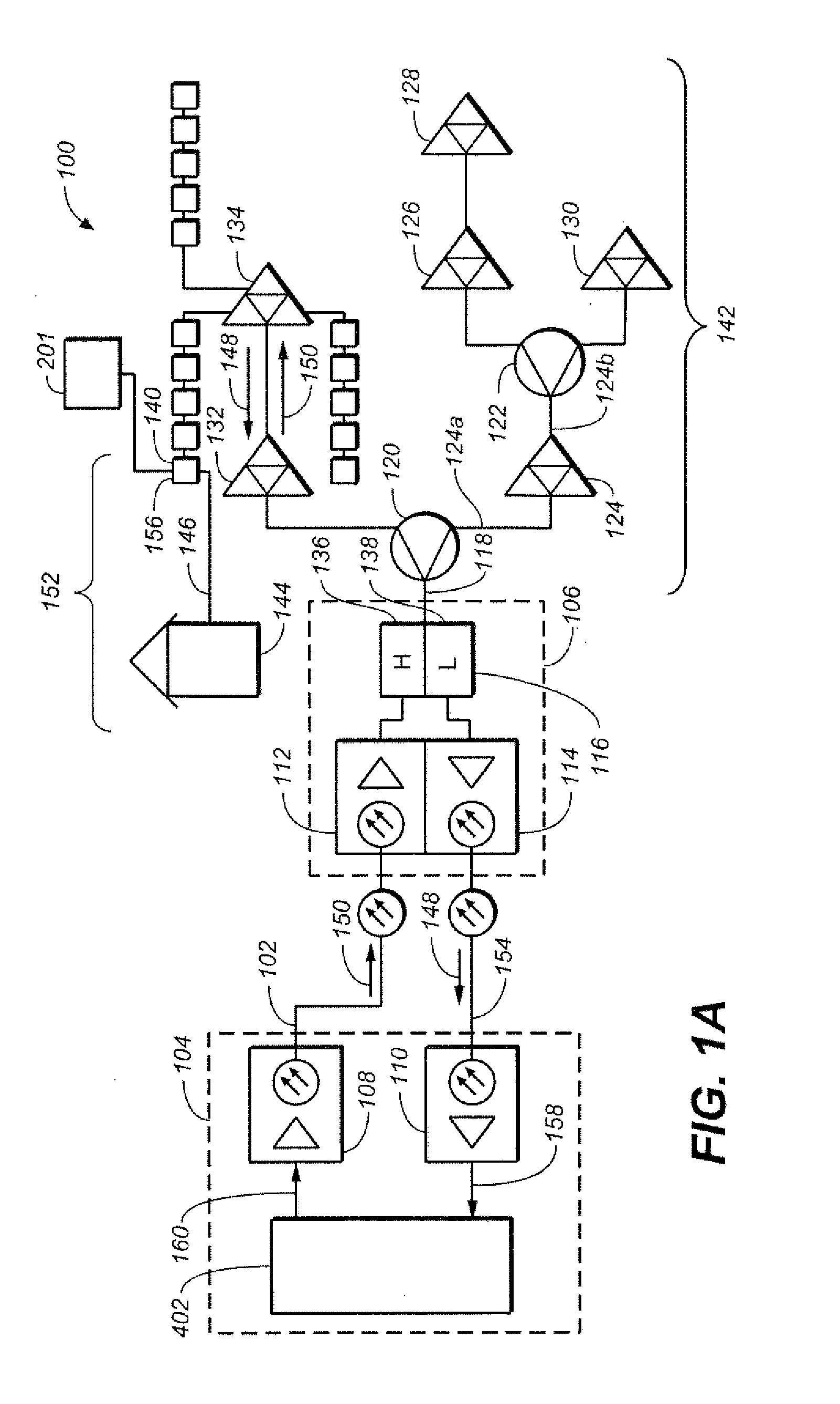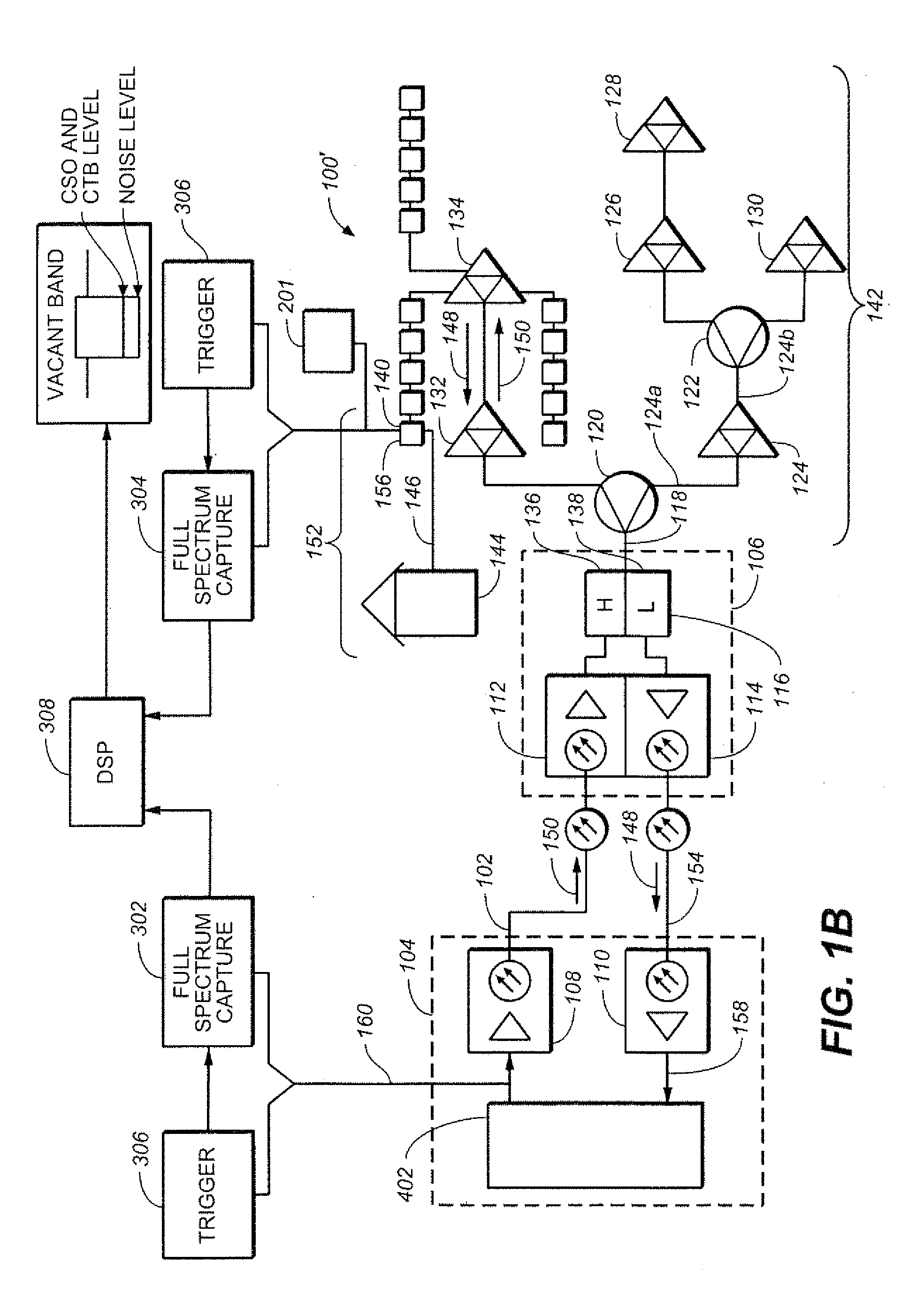Analysis of Captured Random Data Signals to Measure Linear and Nonlinear Distortions
a random data signal and analysis technology, applied in the field of detection of linear and nonlinear distortions, can solve the problems of nonlinear distortion, frequent generation of linear and nonlinear distortions in equipment used in cable systems, and excessive distortions affecting images
- Summary
- Abstract
- Description
- Claims
- Application Information
AI Technical Summary
Benefits of technology
Problems solved by technology
Method used
Image
Examples
Embodiment Construction
[0028]In cable systems, two-way hybrid fiber coax (HFC) cable systems typically provide two-way communications for end users (typically homes or businesses) using both coaxial cable and fiber optic cable. A headend is a collection point for downstream signals and a termination point for upstream signals. “Downstream” or “forward” means signals traveling away from the headend and “upstream” or “reverse” means signals traveling toward the headend. The coaxial portion of cable networks uses a tree-and-branch architecture to split downstream signals and combine upstream signals. On the coaxial portion of the cable plant, downstream signals are sent from a headend to an end user in a downstream frequency band, which may be 54 to 860 MHz. The composite downstream signal is typically comprised of analog television signals in the lower frequencies, such as 54 to 550 MHz, and digital television signals and cable modem traffic in the upper frequency band, such as 550 to 860 MHz. Upstream sign...
PUM
 Login to View More
Login to View More Abstract
Description
Claims
Application Information
 Login to View More
Login to View More - R&D
- Intellectual Property
- Life Sciences
- Materials
- Tech Scout
- Unparalleled Data Quality
- Higher Quality Content
- 60% Fewer Hallucinations
Browse by: Latest US Patents, China's latest patents, Technical Efficacy Thesaurus, Application Domain, Technology Topic, Popular Technical Reports.
© 2025 PatSnap. All rights reserved.Legal|Privacy policy|Modern Slavery Act Transparency Statement|Sitemap|About US| Contact US: help@patsnap.com



